Leonie Rhodes
An award-winning multidisciplinary artist and facilitator from South London, now working from Brisbane on unceeded Jagera and Turrbal land.
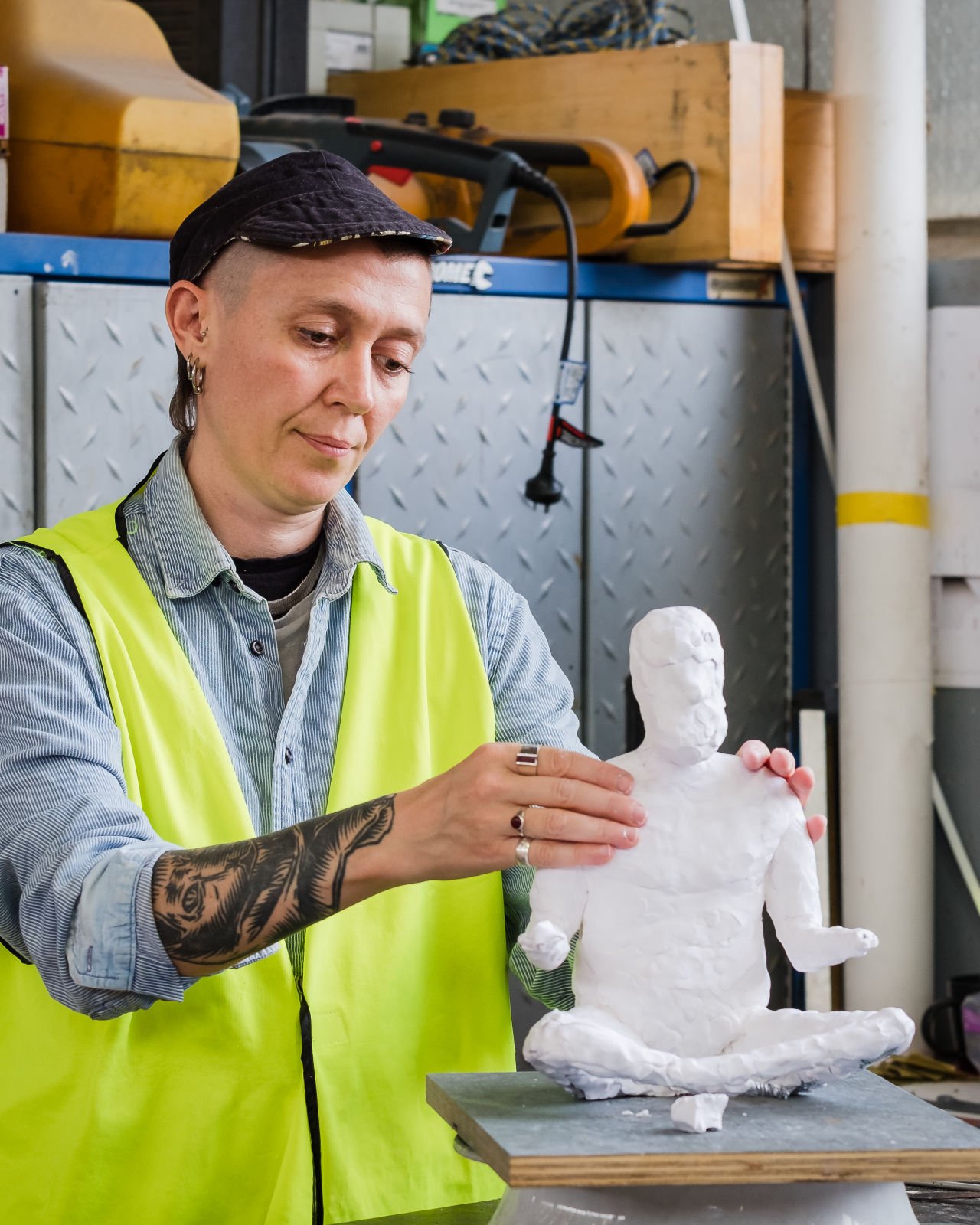
#Authenticity, Identity, and Connection Over Standing Out From the Crowd
We are living in a world where an individual’s desire to stand out from the crowd equates to their ambition, hard work and motivation. Therefore many of us ask if there is a place for small details and little elements to create impact and make a mark in the world of art. Artist Leonie Rhodes believes that the latter will always have a place in the industry. We live in a very noisy landscape where everybody seems to be shouting their lungs out from the rooftops, maybe the process of exploring and taking part of an intimate viewing process of smaller realms is the way to go.
Leonie Rhodes is an award-winning multidisciplinary artist and facilitator from South London, now working from Brisbane on unceeded Jagera and Turrbal land. Leonie’s broad practice incorporates sculpture, painting, new media, public installation, performance pieces, Dj’ing and collaborative work, but predominantly focuses on figurative street art. ‘Boom Boom Bean Selecta’ is Leonie’s Dj moniker and alter ego.
Leonie has spent a couple of months at UAP Brisbane’s studio and workshop working closely with the Art + Design, Design Robotics and Patternmaking teams as part of the organisation’s artist in residency program to help artists with resource and knowledge sharing, future project collaboration and most importantly fostering a collaborative, engaged and connected community of artists and makers.
We caught up with Leonie recently so they could tell us more about their practice, inspirations and future projects.
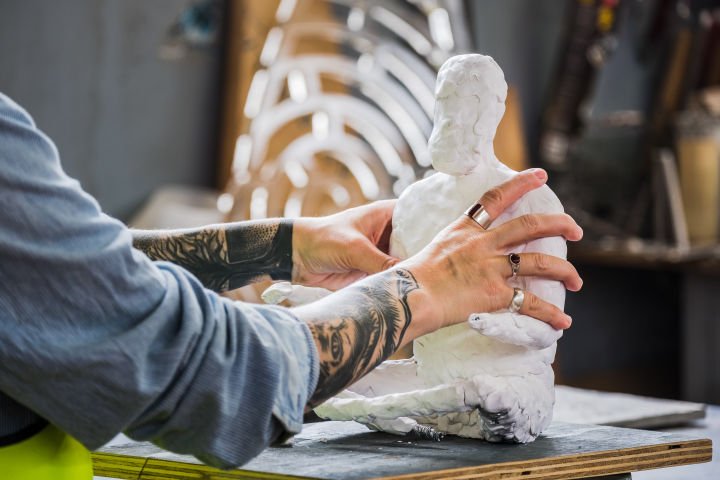
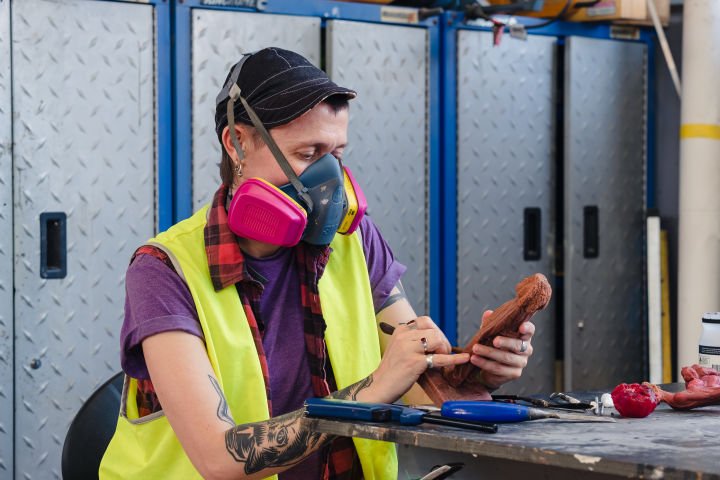
Gilbert Guaring (GG): Can you tell us more about your background and creative practice?
Leonie Rhodes (LR): I’ve been making 3d figurative work since I was 4 years old. I specialised in sculpture from 16 and studied Fine Art Sculpture in London and New York. Much of my work is public and participatory. I create collaborative installations and events involving large numbers of people with councils, festivals, schools, private organisations and via commissions. I enjoy engaging with the community as a subject and a collaborator. I also facilitate other artists and young people through skill sharing, platforming, mentorship and collaboration to develop their practices and improve their lives.
Alongside my work in the community, I have a strong and established studio practice which involves complex and diverse making processes, mediums, and salvaged materials
GG: What does your work aim to say?
LR: In a theoretical sense, my work talks about identity, urban ecology, relationships and marginalisation. My work has political and therapeutic sensibility across mediums. I use openness, thought and radical care to navigate my practice. I don’t have a particular aim in mind, but I do experience my work creating joy, intrigue, conversations and community engagement which helps me to keep forging ahead with it. From the perspective of the historical bronze canon, my work subverts a history of domination by powerful white male cis-gendered subjects or white female cis-gendered subjects via the male gaze.
On a practical level my work talks about my studio practices. I am a maker, I’ve spent my life working with materials to try to establish my work safely in the outdoors. My studio practice is central to my life, and my audience seem to understand the time, effort and skill that goes into it.
GG: What memorable responses have you had to your work?
LR: The two most memorable responses I have had to my work both happened on the same day on Currumbin Beach at Swell Sculpture Festival. My parents were here on holiday and we visited the site. One person looked at my piece ‘Carlita’ and burst into tears. They said that the work was “just so beautiful.” I think having my Mum and Dad see that made it special for me.
The second was a response to a standing piece further up the beach. This person just couldn’t stop laughing at the work. They said something about the scale just really tickled them. I loved that too.
GG: Who is your biggest influence?
LR: My work is influenced in tandem by the figurative and religious history of art and international underground culture; street art and contemporary sculpture. I spend time with my subjects and take lots of photos and drawings. Their personality, strengths and vulnerability’s become the primary influence of the work.
GG: Which current art world trends are you following?
LR: I have been really inspired by the return to a respect for skills-based, representational and traditional art practices in the last ten-twenty years. Thanks to street art and Instagram, people have been freer to enjoy and respond to skills-based practices. Moreover, figurative and representational works have moved back into the high-end galleries and public art projects.
Now with the timely shift in consciousness there has been about figurative public art thanks to the BLM movement, let’s hope this shift in consciousness helps develop the right protections for indigenous sacred sites in this county.
GG: Describe a real-life situation that inspired you?
LR: The most inspiring experience of my life was working for a company in London who supported profoundly vulnerable young people. I worked as an artist and therapeutic facilitator for many years and managed the art department in a street-level centre in Camberwell. It was an extraordinarily complex and challenging work environment but the experience was inspiring and life-changing. It was the young people themselves who helped me to be myself and to be honest and to not hide behind a false sense of ego or strength; to be strong in my vulnerability.
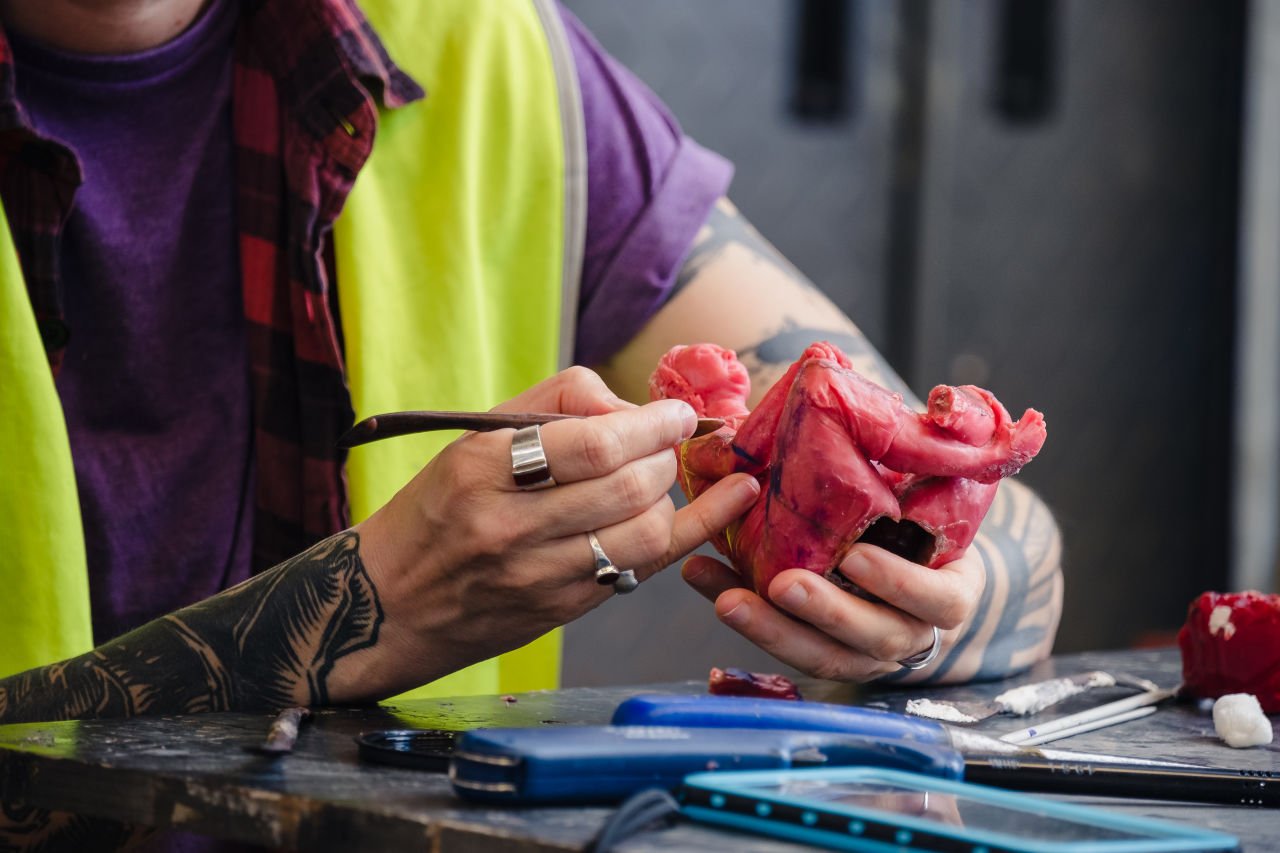
GG: Tell us about your experience spending time at UAP
LR: I’ve had an incredible time at UAP. I have been working on a desk in the pattern making department. We have been thinking about techniques for enlarging my work. While here I have been working on waxworks which will become bronze, sculpting a new piece in clay and fixing some 3d prints which are two times larger than my original works that I will soon be making moulds from for commissions which will also become bronze. Everyone has been interested in and respectful of my making processes, and I have learnt an enormous amount from being on the floor. The robot is currently cutting a timber enlargement of my piece ‘Tripe Axis Intersectional Skater’. It’s been an extremely educational process and has helped my understanding of what it takes to create quality enlargements. I’ve made adjustments to my process on several levels based on what I have learnt. I have also found some new materials I’m excited to experiment with. I have overhauled the way I store, catalogue and price my work. I’ve enjoyed meeting so many interesting people with such diverse skill sets and backgrounds.
GG: What projects are you working on now?
LR: I am currently working towards a solo show at an exciting new ARI in Brisbane called KEPK space. Central to my exhibition is a self-portrait I am producing to show first at the Swell Sculpture Festival and then indoors at KEPK. It is the largest piece I have sculpted so far and is a move from the realm of relational aesthetics to the subject of self. I have done the shoot, and the work is of myself as my DJ alter ego, Boom Boom Bean Selecta. In it, I have a human body and the face of a cat. I have worked with abstracted elements in my figurative works before but not so overtly. I am really excited to enter into the sculpting stage. It feels like an important piece for me.
GG: What is your dream project?
LR: I have two dream projects, first is the Turbine Hall commission in London’s Tate Modern. And second is to do one of my large scale public participatory projects with children at GOMA. I’ve love to fill one of the floors with thousands of young people’s little plasticine people. Or have them installed going up and down with the escalators.
GG: Any advice to young creatives?
LR: Try not to think too much. To not get caught in the concept stage. To just find materials and play with them and see what arises. On a professional level I encourage young people to try to do 2 hours a day, five days a week on what they want to make more of. And to take big breaks from their phones when they are working.
Interview by Gilbert Guaring
#相关文章
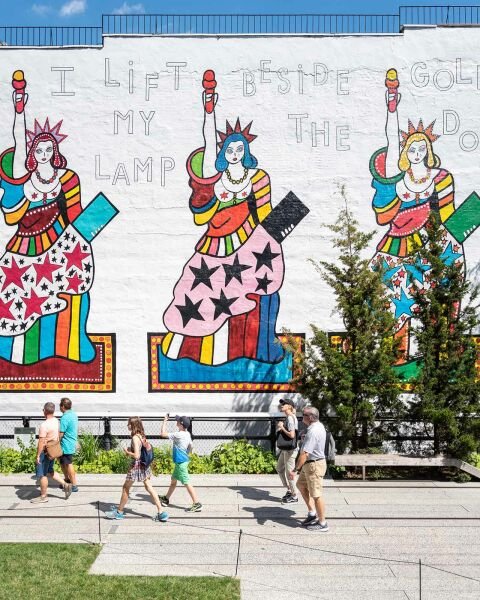
The Best Public Art of 2018
For the third year running, the art-and-design studio and foundry UAP has compiled a list of the most compelling public artworks and initiatives around the globe.
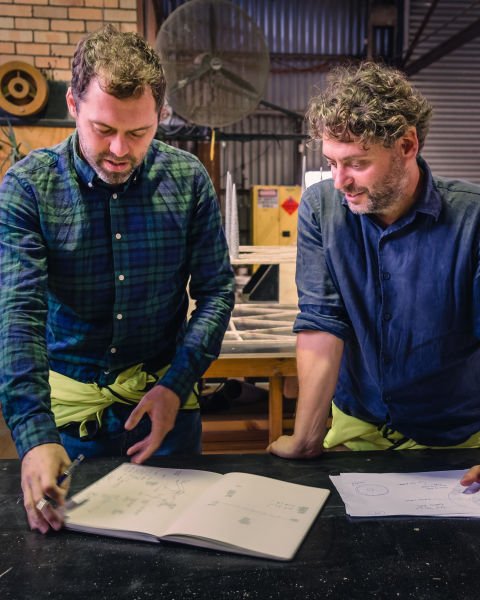
Sebastian Moody and His World Full of Meaning
He is in the business of making compelling stories that connect with audiences. The power of storytelling is central to Sebastian’s work with the prominence of using characteristic text works that speak to the public as messages in communal transitionary spaces, such as vehicular underpasses and building walls.
